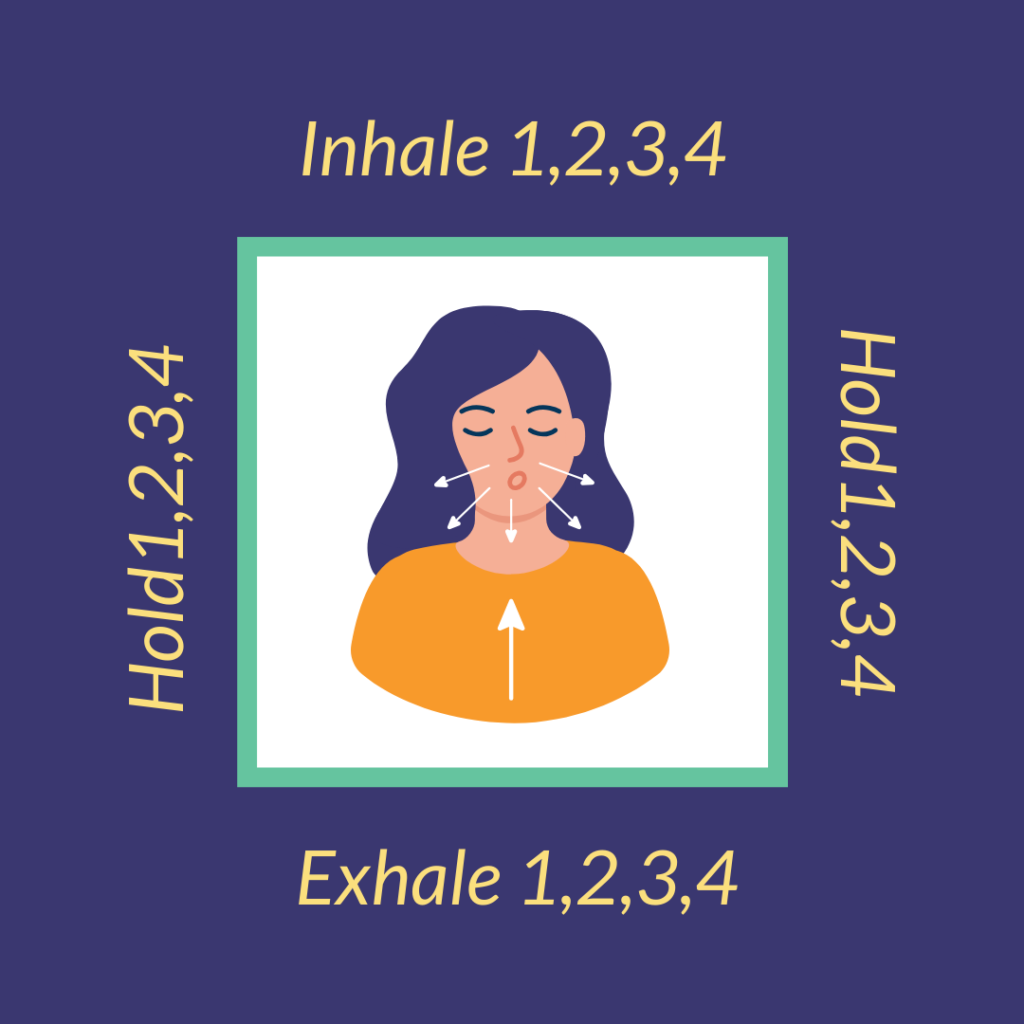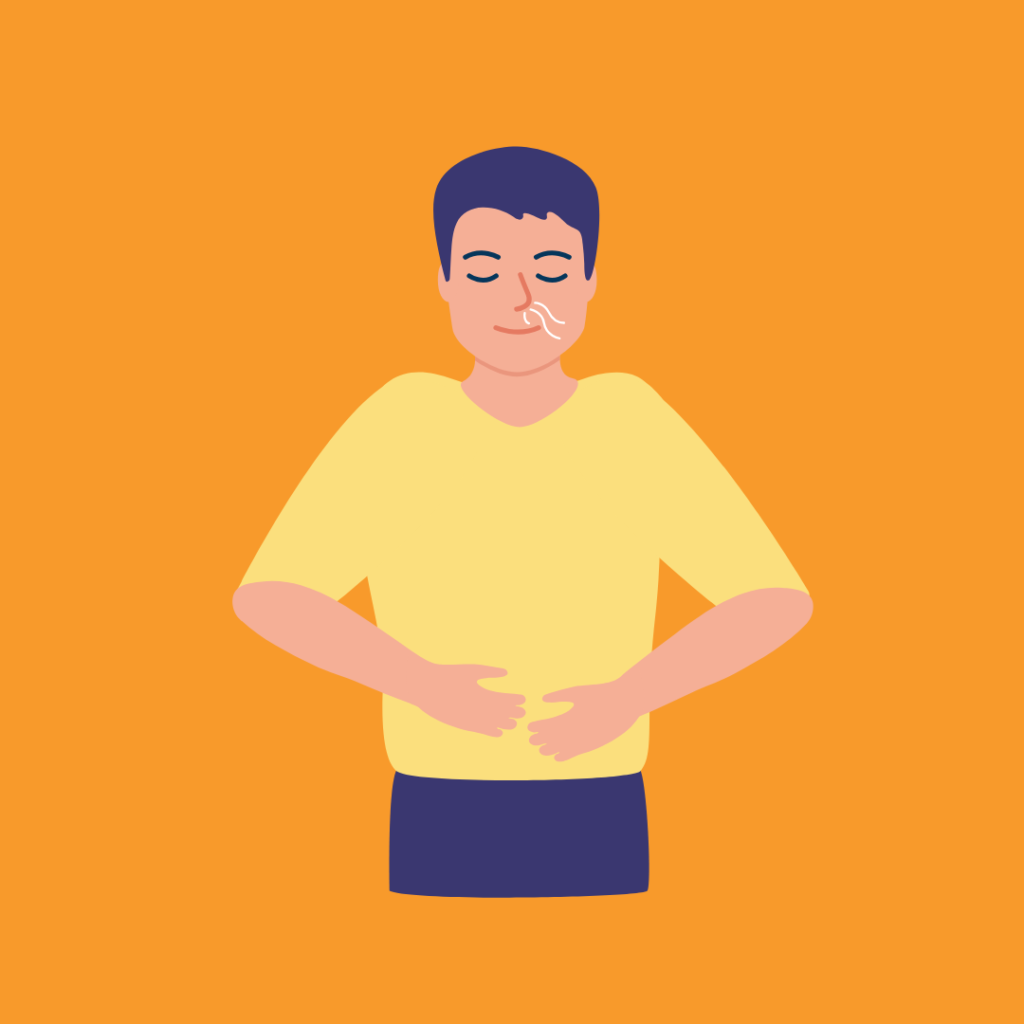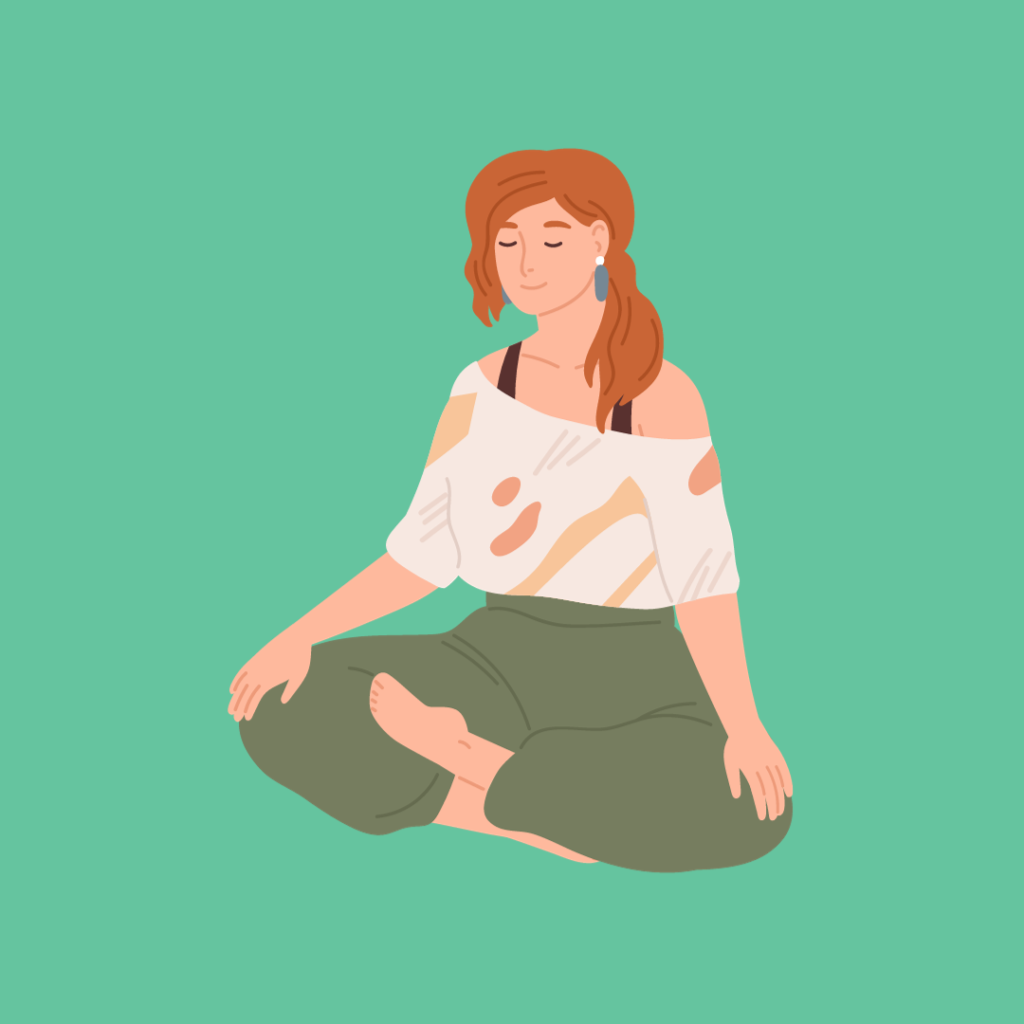
We don’t often realise it, but our breathing, when in auto-pilot mode, can be quite shallow.
Shallow breathing is often associated to stress.
In the contrary, slow and deep breathing is associated to relaxation.
Look at someone sleeping for example, they are very likely to be breathing in a slow and deep relaxed way.
The good news is that you can help yourself feel more relaxed by breathing more consciously.
See below various breathing techniques to explore!
Box breath

First, try to be in a comfortable position. Sitting on a chair, or on the floor can help.
Then, follow the steps:
- Inhale through your nose of four seconds
- Hold your breath for four seconds
- Exhale through your nose or your mouth for fours seconds
- Hold for four seconds
Repeat.
Feeling good, eh?
Diaphragmatic breathing

In this exercise, start by placing your hands on your belly.
Then, inhale, bringing the breath down, feeling your belly rise.
Exhale slowly, taking twice as much time as when your inhale.
Repeat.
You can do that anywhere when you need a moment to connect back with yourself. In the tube, at school, before sleep…
Alternate nostril breathing

This breathing technique focus on breathing through your nose.
With your right hand (if you are right-handed), use your right thumb to block your right nostril. Inhale through the left nostril.
Then, with another finger from the same hand, block your left nostril. Exhale from the right.
Inhale from the right nostril. Exhale from the left nostril
Inhale from the left nostril. Exhale from the right nostril.
Repeat
4-7-8 Breathing

Last exercise of the series. Sit comfortably.
- Inhale for 4 seconds through your nose
- Hold for 7 seconds
- Exhale for 8 seconds through your lips
Repeat.
This exercises are guidance only. Listen to your body, and do what feels good.
